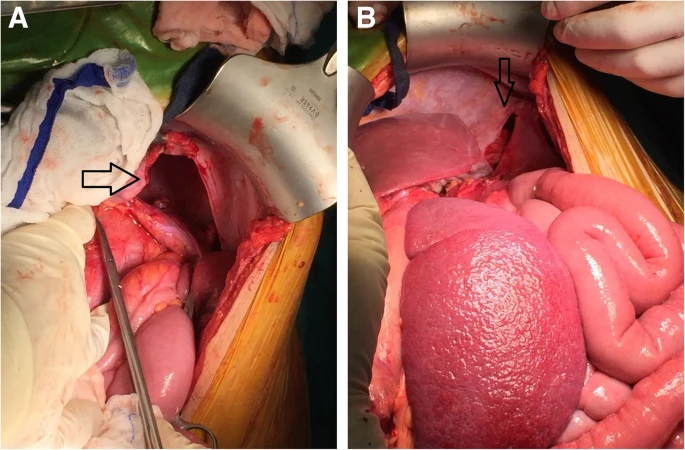If you don’t know the proper technique for CPR you’ll likely cause more harm than benefit. A diaphragmatic rupture for instance.
A 29-year-old pregnant lady was admitted to the obstetric department for normal delivery. However, doctors decided to take her for a C-section because of foetal distress. They prepared her for an urgent operation in the theatre and while they operated on her, she went into cardiac arrest. The team then performed CPR to get her heart back on track. They did it for five minutes straight after which the heart rhythm started returning to normal.
CT chest and Diaphragmatic Rupture
Although the patient’s cardiac rhythm started returning to normal, her respiratory distress somewhat continued. To determine the cause of both cardiac and pulmonary insufficiencies, the surgeons decided on a CT chest. They concluded that the patient had hemopneumothorax. They inserted a chest tube and moved forward with the C-section. However, due to pronounced fetal distress and hypoxia, they failed to save the baby.
Doctors referred the patient to National Heart and Lung Institute after she recovered from her operation to further evaluate her cardiac and pulmonary problems. There, a multidisciplinary team comprising cardiologists, pulmonologists and radiologists re-evaluated her clinical presentation and associated results of radiological investigations. All the doctors finally agreed upon a diagnosis of diaphragmatic rupture. There was a rupture in the patient’s left hemidiaphragm causing the herniation of abdominal contents into the left hemithorax compressing both the lungs and the heart. According to them, this tamponade effect created by her herniation of abdominal contents caused cardio-pulmonary distress.
Surgical Repair of Diaphragmatic Rupture
Doctors prepared the patient for a laparotomy to repair the diaphragmatic defect. They identified the defect and pushed the contents back to their place. Furthermore, they stitched the defect with prolene sutures and used bronchoscopy to achieve ideal lung expansion. Fortunately, everything went according to the plan and the patient did not develop any intraoperative or postoperative complications. Doctors discharged the patient on her seventh postoperative day after assessing her clinical condition. They called her up for a follow-up session one month later where the patient displayed optimal health status without any cardiorespiratory complaints.
How did the CPR cause a Diaphragmatic Tear in This Patient?
During the C-section for a distressed fetus, her uterus ruptured, making her hemodynamically unstable. Thus, she developed cardiac arrest. Doctors gave her CPR. However, a slight caudal misorientation led to an abnormal buildup of pressure in the thoracic cavity that ultimately led to a diaphragmatic rupture.
Pregnant women can often require CPR while on the operating table. According to studies, every 1 in 30,000 pregnant women requires CPR to manage cardiac arrest. Moreover, cardiac arrest is perhaps the most difficult medical emergency to manage in a pregnant woman. The reason is that there are two lives at stake; one of the mother and the other of the fetus. In all such cases, CPR becomes necessary.
What are the Odds of Diaphragmatic Rupture due to CPR?
There are not many cases of diaphragmatic defects caused by CPR in a pregnant woman. However if caregivers do not use the right technique, CPR can cause diaphragmatic tears and consequent herniation of abdominal contents into the thorax. This can cause serious cardiopulmonary distress that can threaten the life of both the mother and the fetus. Doctors need to be aware of the physiological changes in organ anatomy in pregnant women. How they are displaced slightly upwards due to an enlarging uterus and how the abdominal wall loses its compliance too. They should take extra caution while performing CPR on such patients. Moreover, if any tears or broken ribs are suspected after extensive CPR, a multidisciplinary team including surgeons should be readily available to address the complications at hand.




